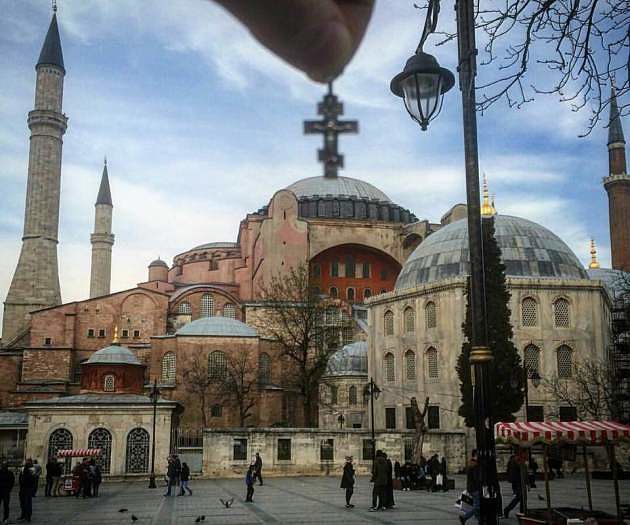“Fantastic Beasts and Where to Find Them” – that was the name of a popular fantasy movie of its time. And for some reason, it is this title that comes to mind when reading the statement of the head of the Department for External Relations of the Moscow Patriarchate of the Russian Orthodox Church, Metropolitan Hilarion (Alfeyev), on the possibility of reviving the Hagia Sophia mosque, which was turned into a museum in 1934.
“Any attempt to change the current status of Hagia Sophia will upset the established interreligious balance in Turkey,” he said. The fantasy of this situation lies in the fact that the ROC makes a statement about some “inter-religious balance” just days after the pompous opening of the “Main Church of the Armed Forces of Russia” – a nominally secular and essentially multi-denominational state (https://golosislama.com/news.php?id=38772).
In Russia, Muslims alone will make up about 10% of the population by 2012, according to very modest estimates. Taking into account demographic trends in different regions, this figure is now significantly higher among Russian citizens, not to mention immigrants permanently residing in the country. At the same time, although 75% of respondents nominally identified themselves as Orthodox Christians (in the same year 2012), in Moscow today, in normal (non-quarantine) times, more Muslims gather in mosques for religious holidays than Orthodox Christians gather in their churches.
The question to the ROC is, when they opened the main church of the Armed Forces as a predominantly Orthodox church, did they consider the “inter-religious balance”? Let’s look at Turkey from this perspective. Nominal Muslims (just like Orthodox Christians in Russia) make up about 98% of the population there. Of course, in reality this number is smaller – let’s not go on thin ice to find out who is a real Muslim and who is not, but let’s say that of these nominally registered Muslims, about 13% do not consider themselves as such in the religious sense. Another 10 to 15 million are Alevis, who are also registered as Muslims but are not religiously Muslim.
Is the question of “interreligious balance” between all these population groups relevant for Turkey? Yes, it is. And it is being addressed more or less successfully – in Turkey, the religious and secular sectors of society coexist, just as Sunni Muslims coexist with various near-Islamic communities. But the issue of the revival of Hagia Sophia has nothing to do with the problem of this balance.
In theory, it can only refer to a small Christian minority, which in total does not exceed 2% of the Turkish population. And if we subtract Armenians, Catholics and followers of the Turkish Orthodox Church who have nothing to do with the Hagia Sophia, the number of Turkish citizens whose religious feelings could be affected by the revival of the mosque will not be more than 1%.
And it is understandable why – because in the 19th and 20th centuries, all the Orthodox provinces of the Ottoman Empire broke away, transforming it into a compact mono-Muslim Turkey. While Russia still retains significant territories of the original and compact dwelling of Muslims: Chechnya, Ingushetia, Dagestan, Karachay-Cherkessia, the Nogai region, Tatarstan, Bashkortostan.
So why does the ROC demand the observance of some “inter-religious balance” in relation to 1% of the Turkish population whose historical homeland is outside its borders (Greeks), but does not care about “inter-religious balance” in relation to about 15% and many millions of Muslims, the majority of whom have their historical homeland inside Russia? Isn’t this… illogical? (In the photo – politician Vitaly Milonov, who lobbies for the interests of the ROC, tries to place an Orthodox cross on the dome of the functioning Hagia Sophia Museum in Istanbul)

